Pole Replacement
By David Collins
Reprinted from "Crown Jewels of the Wire", May 2006, page 23
Pole Replacement -
From a layman's viewpoint
In March 2005 everyone in my neighborhood received notice from Pacific Gas
& Electric Company that, due to the replacement of a power pole, electricity
would be shut down for nine hours on the 21st of the month.
While overall reactions ranged from grumbling to a Iii stoic acceptance,
mine was one of quiet anticipation. For, as it turned out, the pole to be
replaced was a few feet from the corner on which my apartment building sits.
Having not witnessed the process before, and coupled with my insulator interest,
I decided to pursue that course. What I ultimately ended up with was fairly
decent photo-documentation, some very good conversation with some very good
people, and a couple pieces of local history.
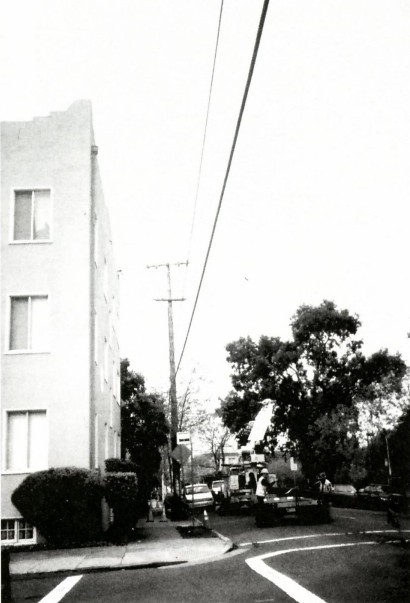
After 80 years of service, all old pole and its glass insulators are
scheduled for removal. Looking west down the street you
call see the pole that
was about to be replaced.
The new pole is on the trailer to the right. On the
left is my apartment building. Taking into account the narrow
streets and tight intersections, the crew did quite
a job jockeying the pole and
trailer into position.
First, a bit of background. The building where I live was built in 1926,
according to my building manager. Therefore, it would be plausible the building
was wired during construction, particularly since the lighting fixtures do not
appear to have been reworked from gas lighting.
On the morning of the 21st, with a full roll of film in the camera, I went
downstairs about an hour or so after the crew showed up. The actual work was
done by a private contractor, with a PG&E superintendent. The crew chief was
at the super's truck, and during a break in their conversation I introduced
myself and explained my interest. Both were agreeable to let me document the
project.
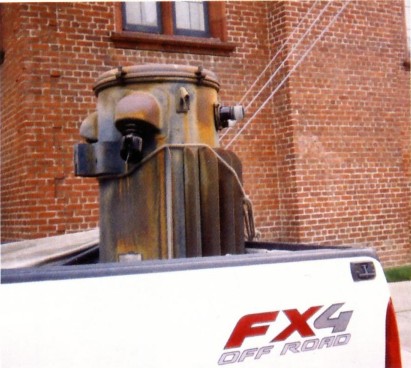
The PG&E super told me the pole had probably been in place since 1920's,
although the "can" (the transformer), already taken down and placed in
the back of a pickup, was from the '50's.
The photo on the right shows the crew setting the replacement pole beside the
old one. The crew chief, Jeff, explained that the topmost wires were to be worked
"hot". I was surprised to learned that the lines are often worked
while energized. I also learned that a fair amount of the wire (cable) that is
used is of aluminum or aluminum alloy. As we talked and I took photos, the
realization came that I was getting an education the average rate payer may be
unaware of.
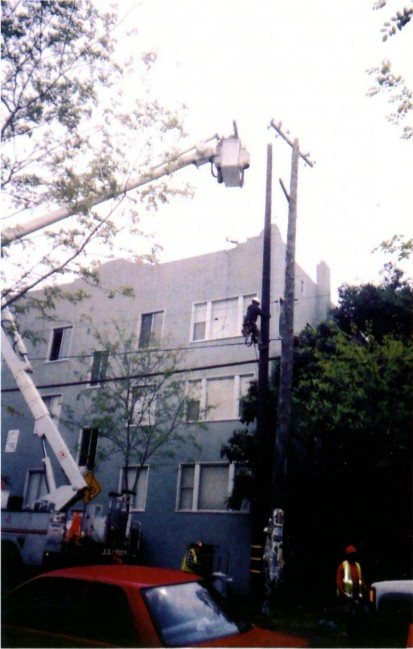
The above photo shows Jeff and a crew member preparing the new crossarms. In
the foreground, Jeff is prepping the secondary crossarm (which will carry lower
voltage lines) with porcelain unipart insulators. He used the drill on the
ground behind him to make the holes for the galvanized insulator pins. Jeff
explained that, as more poles are being replaced, galvanized pins are the norm.
"Locust pins" (the old wooden ones) are literally falling to pieces.
He told me that, more often than not, they break right off, in many cases
without even having to remove the insulators. I believe the insulators were
U-482's. They are white / sky tone glaze with radio-treatment on the saddles.
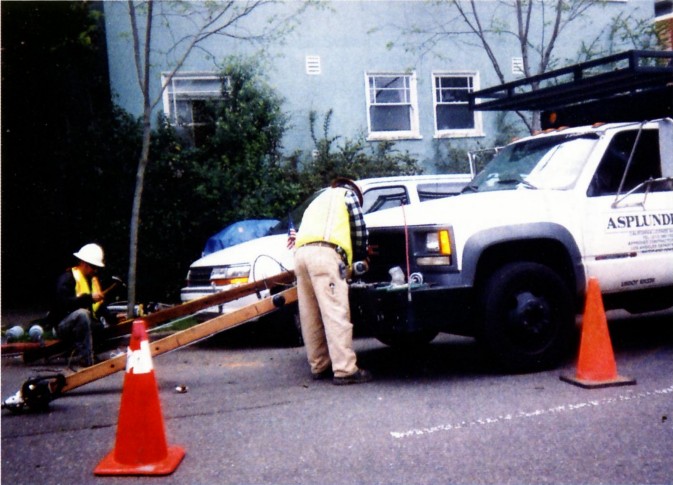
Earlier in the day, I mentioned my interest in insulators and said, if
possible, I'd like to obtain something from the replaced pole. Jeff informed me
he would see to it. Sure enough, when things began winding down, I asked if
they'd found anything interesting. One of the crewmen brought over a canvas
bucket. "You mean these? We just throw 'em away." He set out some
insulators in the truck and I took the following photograph.
From left to right, the insulators are: a light green CD 162 McLaughlin; and
olive green CD 162.1 Star; a CD 162 Star, an aqua CD 134 Star, a sun colored
amethyst CD 162 California, and an unembossed aqua CD 170.1. The white arrows
indicate the insulators which came my way. The "bucket man" got the
olive green Star and the SCA California. He said it was the first he had
personally seen in service.
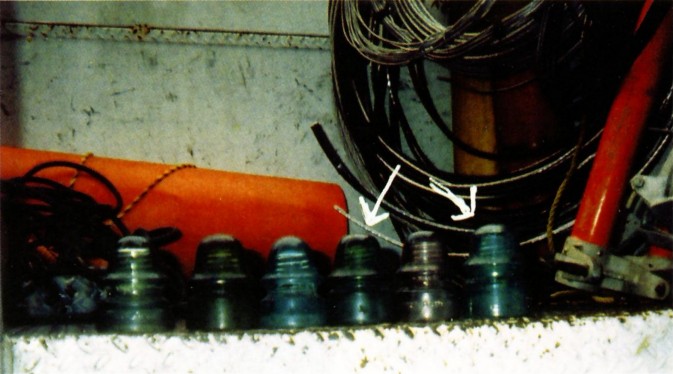
It turned out that a couple of the other crew members took insulators home
occasionally, but they were unaware people really collected them. Running
upstairs, I returned with an issue of Crown Jewels magazine, and some photographs of my collection. Looking through the
magazine seemed to enlighten the workers, particularly when they saw the show
& tell articles and the advertisements.
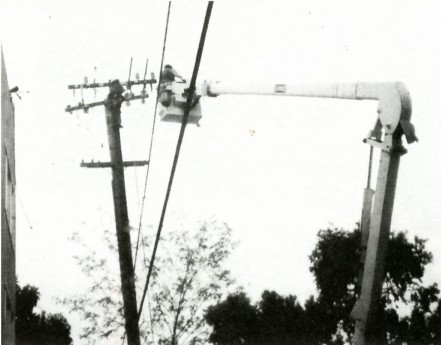
Most of my time was spent observing and photographing; and I managed to run
out of film before the job was completed. Here's a pic of the lineman and bucket
operator removing the crossarms off the old pole.
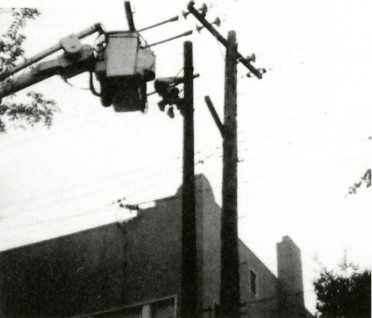
On the right, a picture of the new pole in service.
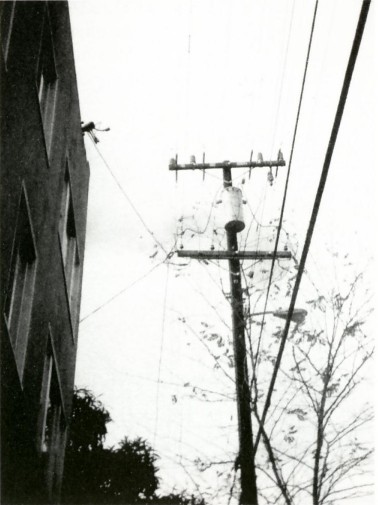
Looking back, the day was quite an educational experience for me, too. It
was the first time I had witnessed a pole replacement, something pretty much
routine to the crew. My observations increased my respect not just for the work
itself, but for the folks who go out there and perform the work. In the future,
I will definitely think twice before grumbling when the power goes out!
| 